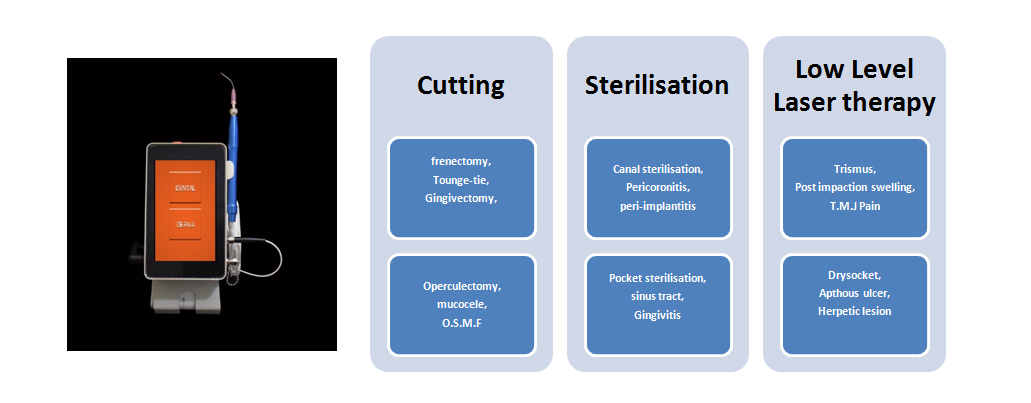Introduction-
Diode lasers have gained in popularity over the last few years in dental offices because of their low cost, portability, reliability and simplicity of use. Diode lasers range in wavelength from 810nm-1064nm, and they are well absorbed in hemoglobin, pigments, and melanin, making these lasers excellent soft tissue “handpieces” that can ablate tissues while maintaining hemostasis.
Many clinicians now see the diode laser as their replacement for electrosurgery, appreciating that the diode laser can work around metals (amalgam, gold, braces and dental implants) without fear of creating iatrogenic damage.
Moreover, diode lasers can be used within endodontic canals5-9 and periodontal pockets10-12 to reduce bacteria counts, whereas the electrosurgery unit cannot do this. In addition, two unique features of lasers (as compared to monopolar electrosurgical units) are that they require less-anesthetic for small amounts of tissue are removed and can be used for patients with pacemakers. When a clinician first purchases a diode laser, it is easy to be confused by representatives who claim that one diode will cut faster than another, or may be superior for certain procedures. The author has used many different diode lasers and different diode laser wavelengths, and has found that they are remarkably different in ability to cut tissues which depends on lot of factors-
- Diode Peak Power
- MPE
- Wavelength
- Diode capacity
- Service
- Clinical Support
- Warranty
- Spares availability
Uses of Diode laser in day to day practice-
Laser can be used in day to day treatment on daily basis in our practice, from basic endodontic treatment to gingivectomy to gingival troughing laser is helpful in each and every cases.



Comments